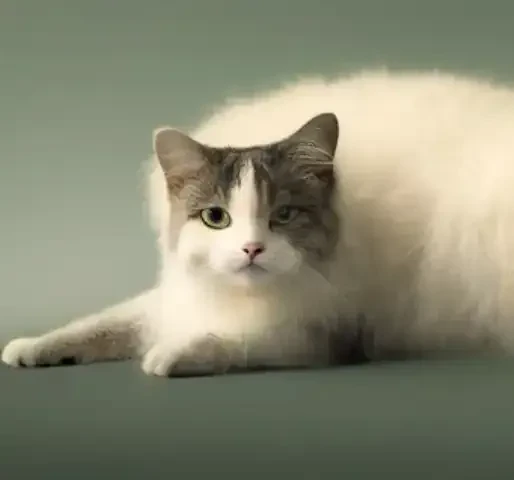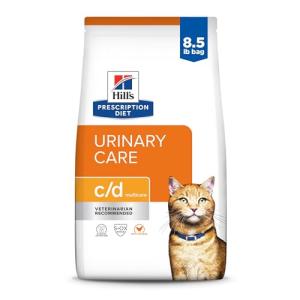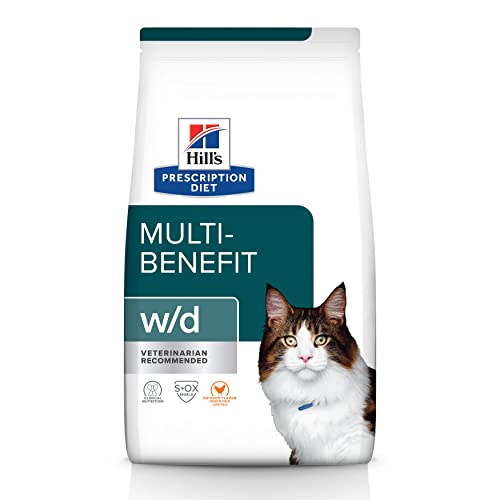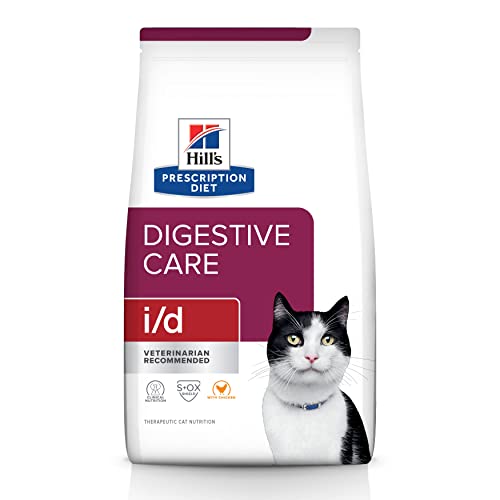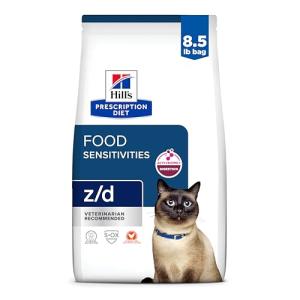Fluffy used to grace your kitchen counters with the agility of a seasoned gymnast, a graceful leap followed by a soft purr of contentment. Now, however, that counter-top ascent resembles more of a gentle, albeit determined, roll. Sound familiar? If your once-spry feline companion is showing signs of slowing down, if those playful pounces have become more of a leisurely stroll, and if a gentle squeeze reveals a bit more padding than you remember, you are far from alone. It’s estimated that a staggering majority, well over half, of our beloved household cats are carrying excess weight, tipping the scales into the overweight or obese category. While extra cuddliness might seem endearing, and perhaps even indulged out of love with extra treats and generous food portions, this weight gain is far more than just an aesthetic concern; it’s a serious health issue with significant implications for your cat's long-term well-being. It's time to gently acknowledge that if your feline friend is carrying a few extra pounds, it’s not a reflection of failed affection, but rather an invitation to act, to learn, and to embark together on a journey towards a healthier weight. This article is your guide, offering practical, actionable diet and exercise tips to help you safely and effectively address cat obesity. Together, we'll explore the reasons behind feline weight gain, understand the risks it poses, and, most importantly, discover the simple yet powerful steps you can take to help your cherished cat achieve a healthy weight, leading to a happier, more active, and longer life filled with purrs and playful moments.
To effectively address cat obesity, we must first understand what it truly means and why it’s such a critical concern. While we often use the terms interchangeably, there’s a distinction between "overweight" and "obese" in cats. An overweight cat is simply carrying a few extra pounds beyond their ideal weight range, while an obese cat is significantly overweight, with excess body fat accumulating to a degree that negatively impacts their health. Think of it as a spectrum: overweight is a gentle curve in the road, while obesity is a steeper, more challenging climb. Both conditions, however, warrant attention and action.
Cat obesity isn't just about aesthetics; it's a gateway to a host of serious health risks, significantly impacting a cat's quality of life and potentially shortening their lifespan. Perhaps the most well-established link is with Diabetes Mellitus (Type 2). Obesity is a major driver of insulin resistance in cats, making them highly susceptible to developing this endocrine disorder. The excess body fat interferes with the body's ability to regulate blood sugar, often leading to a need for lifelong insulin therapy. Arthritis and joint pain are another common consequence of carrying excess weight. The added pressure on joints, especially in the hips, knees, and elbows, accelerates wear and tear on cartilage, leading to pain, stiffness, and reduced mobility, significantly impacting a cat's ability to jump, play, and groom themselves comfortably. Obesity also puts a strain on the heart, potentially leading to heart disease (Cardiomyopathy). The heart has to work harder to pump blood throughout a larger body mass, increasing the risk of heart muscle enlargement and other cardiac problems. Liver disease, specifically Hepatic Lipidosis, is another serious concern, particularly if weight loss is attempted too rapidly. When an obese cat goes without food for even a short period or loses weight too quickly, the body mobilizes large amounts of fat, which can overwhelm the liver’s ability to process it, leading to a dangerous and potentially fatal liver dysfunction. Urinary tract issues, such as Feline Lower Urinary Tract Disease (FLUTD) and cystitis, are also more common in overweight cats, potentially due to reduced activity levels and altered water intake. Overweight cats may also experience skin problems as they often have difficulty grooming themselves effectively, especially in hard-to-reach areas. This can lead to matting, skin infections, and discomfort. Ultimately, obesity can contribute to a reduced lifespan and a significantly decreased overall quality of life. Obese cats are less active, less playful, and more prone to a range of debilitating and painful conditions. Furthermore, obesity can increase surgical and anesthetic risks. Anesthesia and surgery are inherently more complex and carry higher risks in obese animals due to compromised respiratory function and other physiological factors.
Recognizing if your cat is overweight or obese is the first step in addressing the issue. While a veterinarian's assessment is always recommended, you can begin by learning to assess your cat’s Body Condition Score (BCS) at home. BCS is a standardized system used by veterinarians to evaluate a pet's body fat. It’s a combination of visual assessment and palpation (feeling) to determine if a cat is underweight, ideal weight, overweight, or obese. A common system uses a 9-point scale, although a simplified 5-point scale is also sometimes used. In an ideal body condition, you should be able to easily feel your cat's ribs with only a slight fat covering. When viewed from the side, a subtle abdominal tuck should be visible, and when viewed from above, a discernible waistline should be apparent behind the ribs. An overweight cat will have ribs that are palpable but covered with a moderate layer of fat. The abdominal tuck may be less pronounced or absent, and the waistline may be slightly rounded when viewed from above. An obese cat will have ribs that are difficult to feel due to a thick layer of fat. There will be no visible abdominal tuck, and no discernible waistline; instead, the cat will have a rounded or even bulging abdomen, with noticeable fat deposits in the chest and abdomen. Learning how to assess your cat's BCS at home can be a valuable tool for monitoring their weight and condition.
Beyond BCS, there are other visual cues that can indicate if your cat is overweight or obese. A lack of a visible waistline when viewed from above is a strong indicator. A rounded abdomen, often described as a "belly bulge" that sways from side to side when walking, is another telltale sign. Difficulty palpating the ribs due to a thick layer of fat is a key indicator of obesity. Visible fat pads, particularly in the chest or abdomen, are also common in obese cats. Finally, weighing your cat regularly is essential for objectively tracking their weight. Establish a baseline weight during a veterinary visit and then monitor weight changes over time, ideally weekly or bi-weekly, using a pet scale or by weighing yourself holding your cat and then subtracting your own weight.
Once you've determined your cat is overweight or obese, dietary changes become the cornerstone of a successful weight loss plan. Calorie restriction is the fundamental principle of weight loss. Weight loss occurs when your cat consistently consumes fewer calories than they expend through daily activity. However, it’s crucial to emphasize safe calorie restriction. Drastic calorie reduction can be dangerous for cats, particularly obese cats, potentially leading to hepatic lipidosis. Therefore, consulting your veterinarian first is absolutely essential before starting any weight loss program for your cat. Your veterinarian will assess your cat's overall health, determine their ideal weight, calculate their daily calorie needs for safe and gradual weight loss, and rule out any underlying medical conditions that may be contributing to their weight gain or that could be impacted by dietary changes.
Controlled portion sizes are paramount for successful weight loss. Ditch the "eyeballing" and embrace precision. Use measuring cups and, ideally, a food scale to accurately measure each meal. Adhere strictly to your veterinarian's recommendations for daily calorie intake and the corresponding amount of food. Dividing the daily ration into multiple smaller meals, if appropriate for your cat's feeding habits and your schedule, can sometimes help with satiety and stabilize blood sugar levels, particularly in diabetic cats or those prone to rapid eating.
Choosing the right cat food is as crucial as portion control. The ideal weight loss diet for cats is typically high in protein, moderate in fat, and lower in carbohydrates. This macronutrient profile is beneficial because it helps cats feel fuller for longer, supports muscle mass maintenance during weight loss, and is more aligned with their natural carnivorous dietary needs. Prescription weight loss diets, specifically formulated by veterinary nutritionists, are often recommended by veterinarians as the safest and most effective option. These diets are calorie-controlled, nutritionally balanced, and specifically designed to promote weight loss while meeting a cat’s nutritional requirements. While prescription diets are often the gold standard, they can sometimes be more expensive and may require a prescription from your veterinarian. High-protein, lower-carb commercial cat foods available over-the-counter can be considered as an alternative, but only if veterinarian-approved. Carefully reading food labels is critical. Look for cat foods with a high protein percentage, a lower carbohydrate percentage (ideally under 10% on a dry matter basis), and a controlled calorie content. Canned or wet food is often naturally lower in carbohydrates than dry kibble, making it generally a more suitable choice for weight loss diets. Homemade diets should be approached with extreme caution and are strongly discouraged unless formulated by a board-certified veterinary nutritionist. Creating a nutritionally balanced homemade diet for cats is complex, and improper formulation can lead to serious nutritional deficiencies and health problems.
When considering food types, wet food offers several advantages for weight loss. As mentioned, it’s typically lower in carbohydrates than dry food. It also boasts a higher moisture content, which promotes hydration, naturally helping cats feel fuller and contributing to overall health, especially for cats prone to urinary issues. Furthermore, wet food can be more palatable for some cats, especially those who are picky eaters or have dental issues. Dry food, while convenient to measure and store, is often more calorie-dense and higher in carbohydrates, potentially making weight loss more challenging. If dry food is used, opt for lower-calorie, higher-protein formulas specifically designed for weight management. Combination feeding, mixing wet and dry food, can offer a compromise, potentially combining the benefits of both types. However, carefully calculate portion sizes for both wet and dry components to ensure overall calorie restriction is maintained.
Strategic feeding methods can further enhance weight loss efforts. Meal feeding, switching from free feeding (leaving food available all day) to scheduled meal feeding, is essential for portion control. This allows you to precisely measure and control your cat's calorie intake. Puzzle feeders and slow feeders are valuable tools to incorporate into meal times. These devices require cats to “work” for their food, slowing down their eating rate, prolonging mealtime, and providing mental stimulation, all of which can contribute to a feeling of fullness and reduce overeating. Examples include food balls, puzzle bowls, and treat mazes. Dividing the daily food ration into multiple small meals, instead of one or two large meals, may also be beneficial for some cats, helping to stabilize blood sugar levels and promote satiety throughout the day. However, consult your veterinarian to determine if multiple small meals are appropriate for your cat's individual needs and health condition.
Treats, while expressions of love, can be calorie bombs that sabotage weight loss efforts. During a weight loss program, limit treats significantly, or even eliminate them entirely initially. If treats are given, choose healthy treats in moderation, opting for low-calorie, protein-based options such as small pieces of cooked chicken, fish, or commercially available low-calorie cat treats. Consider using a small portion of your cat's daily kibble ration as treats instead of adding extra calories from separate treat products. When transitioning your cat to a weight loss diet, do so gradually to avoid digestive upset. A sudden diet change can cause diarrhea, vomiting, or food aversion. Gradually mix the new food with the old food over a period of 7-10 days, slowly increasing the proportion of the new food each day while decreasing the old food. Finally, be mindful of what to avoid. Steer clear of fad diets and “crash” diets, which are dangerous and can lead to serious health problems like hepatic lipidosis. Avoid giving human food and table scraps, which are often high in calories, fat, salt, and may contain ingredients that are toxic to cats. Excessive treats and “empty calories” from treats and snacks must be minimized or eliminated. Most importantly, never ignore your veterinarian’s recommendations and always follow their guidance for your cat’s weight loss plan.
Diet is only half the equation; exercise and activity are equally vital for successful weight loss and overall health improvement in cats. Exercise burns calories, directly contributing to the calorie deficit needed for weight loss. It also improves metabolism and insulin sensitivity, which is particularly beneficial for overweight cats who may be at risk of diabetes. Exercise strengthens muscles and joints, improving mobility and reducing pain, especially for cats with arthritis. Beyond the physical benefits, exercise provides crucial mental stimulation for cats, reducing boredom, preventing behavioral issues linked to inactivity, and enhancing their overall well-being.
There are many types of exercise and activities you can incorporate into your cat's routine. Interactive play is often the most engaging and effective way to get cats moving. Utilize feather wands, laser pointers (using with caution, always ending play with a tangible toy to avoid frustration), fishing rod toys, and toy mice to pique their predatory instincts and encourage chasing, pouncing, and jumping. Aim for multiple play sessions throughout the day, even short bursts of 5-10 minutes several times a day can be beneficial. Climbing structures and cat trees encourage vertical exploration and activity. Place them in stimulating locations, such as near windows overlooking bird feeders or interesting outdoor scenes, to further entice your cat to climb and explore. Food puzzles and treat dispensers, as mentioned earlier, are excellent for combining feeding with activity. By making mealtime a bit more challenging and engaging, you encourage movement and problem-solving skills. For some cats, leash walking can be an option, although it’s not suitable for every feline. Introduce leash walking gradually indoors, using a harness (not a collar, for safety), and positive reinforcement. Start with short, supervised excursions in a safe outdoor area, gradually increasing duration and distance as your cat becomes more comfortable. Environmental enrichment in general can encourage movement. Window perches for bird watching, rotating toys regularly to maintain novelty, and providing cardboard boxes for exploration all stimulate activity and reduce boredom. Hiding small portions of their daily kibble ration in different locations around the house encourages foraging behavior and increases movement throughout the day.
Making exercise fun and engaging is key to long-term success. Understand your cat's individual play style and toy preferences. Some cats prefer chasing wand toys, while others are more motivated by crinkle balls or laser pointers. Use toys that your cat finds genuinely appealing and stimulating. Keep play sessions short, frequent, and positive. End each session on a high note, such as allowing your cat to “capture” their toy at the end of a chase, providing a sense of accomplishment. Be patient and persistent, particularly if your cat is initially reluctant to play. It may take time to discover what truly motivates your cat and to gradually build their activity tolerance. Gradually increase activity levels, especially if your cat is significantly overweight or has been sedentary for a long time. Start with short play sessions and gradually increase the duration and intensity of playtime as your cat becomes more fit. Avoid overexertion, especially initially, and watch for signs of fatigue, panting, or overheating. For older cats or cats with health issues like arthritis, adapt exercise routines to their physical abilities and limitations. Focus on gentle play, shorter sessions, and low-impact activities that are comfortable for them. Always consult with your veterinarian for exercise recommendations if your cat has any underlying health conditions.
Monitoring progress and staying on track are essential for a successful weight loss journey. Regular weight checks at home are crucial. Weigh your cat weekly or bi-weekly and keep a weight loss chart or log to track their progress. Regular Body Condition Score assessments at home should also be performed periodically to monitor fat loss and muscle tone, comparing your cat’s condition to ideal BCS images and descriptions. Regular veterinary checkups specifically for weight loss monitoring are vital. These visits allow your veterinarian to track your cat’s weight loss, assess their BCS professionally, check for any health issues that may arise during the weight loss process, and provide ongoing guidance and support. Based on your cat's progress, your veterinarian can help you adjust the diet and exercise plan as needed. Weight loss should be gradual and steady. Aim for a safe and healthy weight loss rate, typically around 0.5-2% of body weight per week, as recommended by your veterinarian. If weight loss is too slow or plateaus, your veterinarian may adjust calorie intake or recommend dietary modifications. Similarly, you may need to adjust the exercise routine based on your cat’s progress and response to activity. Remember that patience and consistency are key. Weight loss in cats is a marathon, not a sprint. It takes time and consistent effort to see meaningful results. Don’t get discouraged by plateaus in weight loss or occasional setbacks; stay committed to the plan. Celebrate small successes along the way and focus on the long-term health benefits you are providing for your feline companion.
Addressing cat obesity is not just about aesthetics; it's about giving your beloved feline companion the gift of a longer, healthier, and more joyful life. Remember that cat obesity is a serious health issue with significant consequences, but it is also a condition that you, as a loving and dedicated owner, have the power to address. The key takeaways are clear: safe calorie restriction through controlled portion sizes and appropriate food choices, combined with consistent and engaging exercise, are the foundations of effective weight loss. By implementing these diet and exercise tips, you will witness remarkable positive outcomes: increased energy levels, improved mobility and playfulness, a significant reduction in the risk of developing serious health conditions, and ultimately, a longer and happier life for your cat. While the journey may require patience, persistence, and a dedicated effort, remember that you are not alone. Consult your veterinarian to embark on your cat's weight loss journey today, partnering with them to create a personalized plan and providing your feline friend with the gift of a healthier lifestyle. Helping your cat achieve a healthy weight is a profound act of love that will pay dividends in countless purrs, playful moments, and precious years of companionship together, strengthening your bond and enriching both your lives in immeasurable ways.
